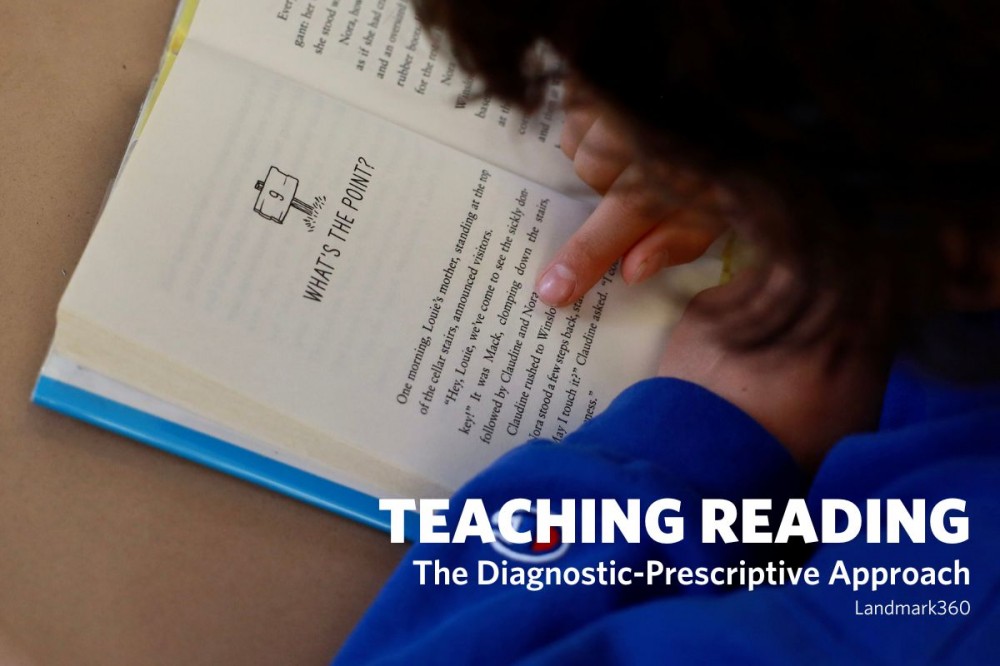- Our School
- Our Advantage
- Admission
- Elementary•Middle School
- High School
- Summer
- Giving
- Parent Resources
- For Educators
- Alumni
« Back
Teaching Reading:
“Children who can treat spoken words as consisting of phonemes are said to have acquired phonemic awareness.”
Teaching Reading
October 31st, 2022
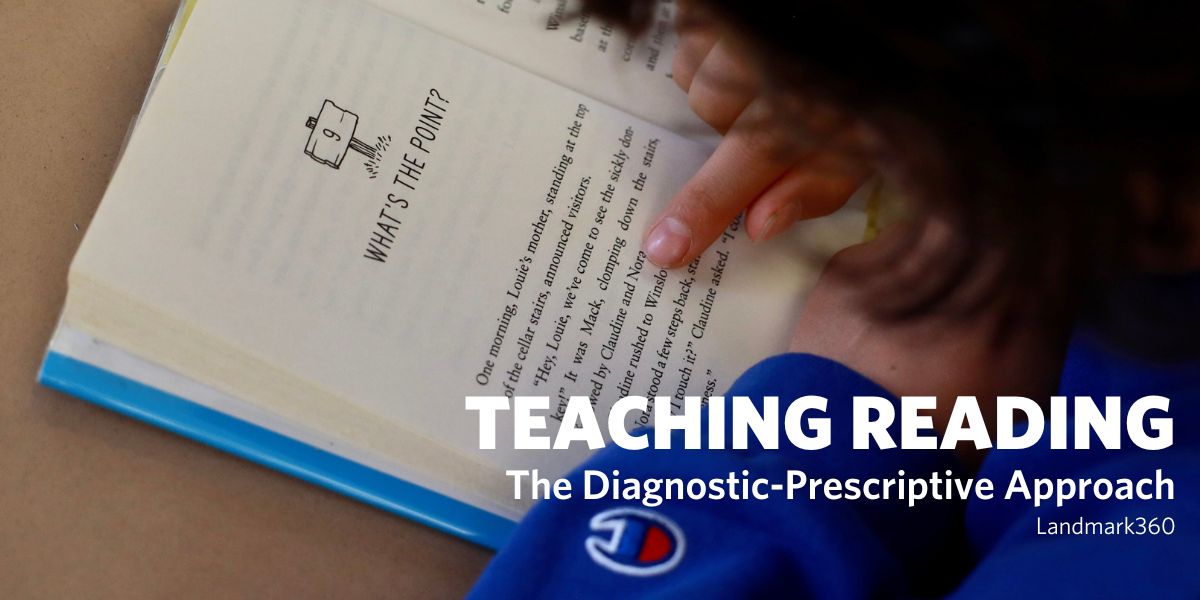
Teaching Reading:
The Diagnostic-Prescriptive Approach
Tears. 2:30 (a.m., of course). Toddler. I am not a doctor, but she’s coughing. A little warm. Decidedly not happy. Tylenol: the panacea for parents. Twenty minutes. She nods off—wheezy, but asleep. The daycare sniffle strikes again. Mother Goose! Please, don’t let this be another ear infection. We can call her pediatrician in the morning—figure out what’s up.
When your child is feeling lousy, there is great comfort knowing that the experts can help. They recognize the symptoms. They have the tests. They have the right treatment. When your child feels lousy about reading, there is also great relief knowing that an expert approach will set them on a path to success.
A Proven Approach to Teach Reading
The science of reading follows a diagnostic-prescriptive medical model. Practitioners first determine the specific learning needs for students who struggle to read and then provide them with the most appropriate research-based reading instruction. I teach at Landmark School, specializing in serving students with dyslexia and other language-based learning disabilities. Dyslexia is an “emergent condition” (Seidenberg, 2018). The best treatment is early intervention to prevent the compounding effects over time (Gaab, 2019). Regardless of when students come under our care, the approach is the same.
The cornerstone of our model is the daily, individualized, one-to-one tutorial. Tutorial programming is determined by diagnostic screening and a battery of tests delivered in the admission process. Typically, the Admission team coordinates with academic advisors and the Literacy Department. A student who is diagnosed with deficits in phonemic awareness, an auditory processing subskill within phonological awareness (PA), will be prescribed a specific tutorial to build and strengthen this prerequisite reading skill. Students who do not have PA weakness still require specific reading instruction tutorials based on their diagnosis.
“Children who can treat spoken words as consisting of phonemes are said to have acquired phonemic awareness.”
-Mark Seidenberg
Fostering Reading Comprehension
In order to conceptualize the components of skilled reading, two guiding models have been widely lauded by researchers and practitioners alike. The Simple View of Reading (Gough and Tunmer, 1986) inserted below stipulates that skilled reading comprehension results from the product of printed word recognition and language comprehension. If students cannot decode the printed word lighthouse, they cannot access its meaning. Students who do not have lighthouse in their verbal lexicon will not comprehend its meaning in text even if they can decode it (Moats, 2019). Deficits in either area (or both) impair reading comprehension, so diagnostic-prescriptive instruction accounts for this equation.

The second useful model is the Scarborough Reading Rope (Scarborough, 2001) inserted below. This illustrates the many reading skills that must be woven together across the broad areas of Word Recognition and Language Comprehension. An individualized tutorial program provides the flexibility needed to fortify weaker strands and to intertwine them with strands of relative strength.
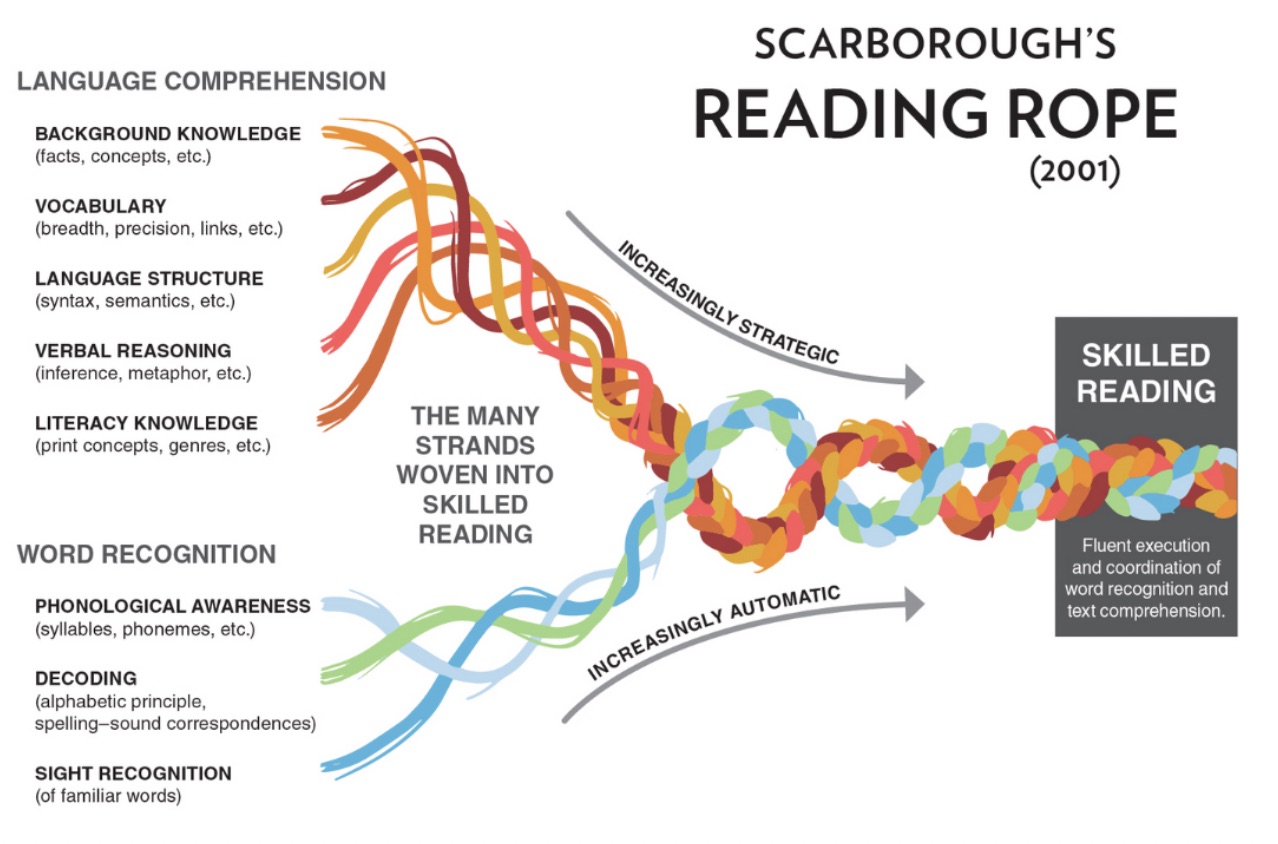
(Scarborough Reading Rope)
Individualizing Instruction
How does a diagnostic-prescriptive approach parse through the various components of skilled reading to provide students with appropriate individualized instruction?
Where I teach, this commitment to an individualized program for each student is initially informed by the Admission team's assessments as well as an informal diagnostic screening at the beginning of each school year. This might include a spelling inventory, oral reading fluency assessment, and a silent or oral reading comprehension evaluation. Taken together, the results help the student’s academic advisor and tutor create a customized tutorial program.
There is no singular curriculum or program. The reading instruction is prescriptively tailored to the students’ particular diagnosis although it does follow a research-based scope and sequence. Observations, running records, progress monitoring, quarterly reports, and ongoing formal and informal assessments help direct the course of reading instruction for the students throughout the academic calendar and from year-to-year.
Relying on Research
Reading and literacy teachers should lean heavily on research-supported practices when delivering targeted reading instruction in a one-to-one tutorial or classroom setting. As Dr. Louisa Moats says, “Teaching reading is rocket science,” so the dissemination of research into practical classroom instruction requires a collaborative approach and ongoing professional development (Moats, 2020). However, Landmark teaches reading the way we do because the science of how the brain performs or struggles to perform the acquired skill of reading supports our approach.
The various strands and strings within the Reading Rope correspond to physical regions in the brain (Dehaene, 2009). Deliberate reading instruction strengthens and integrates those brain regions that must coordinate to enable skilled reading in our students. Sometimes the missing string is phonemic awareness. Sometimes it is linking spelling conventions to those established sounds. Sometimes it is the depth and breadth of vocabulary development—the semantic meaning attached to words.
A Complex Process Requires an Intentional and Effective Approach
In the highly specialized environment where I teach, the system is set up to optimize the intersection of diagnostics, on-task assessments, teaching expertise, and a reliance on research-based practices to provide the most effective reading instruction that any given student needs at the time.
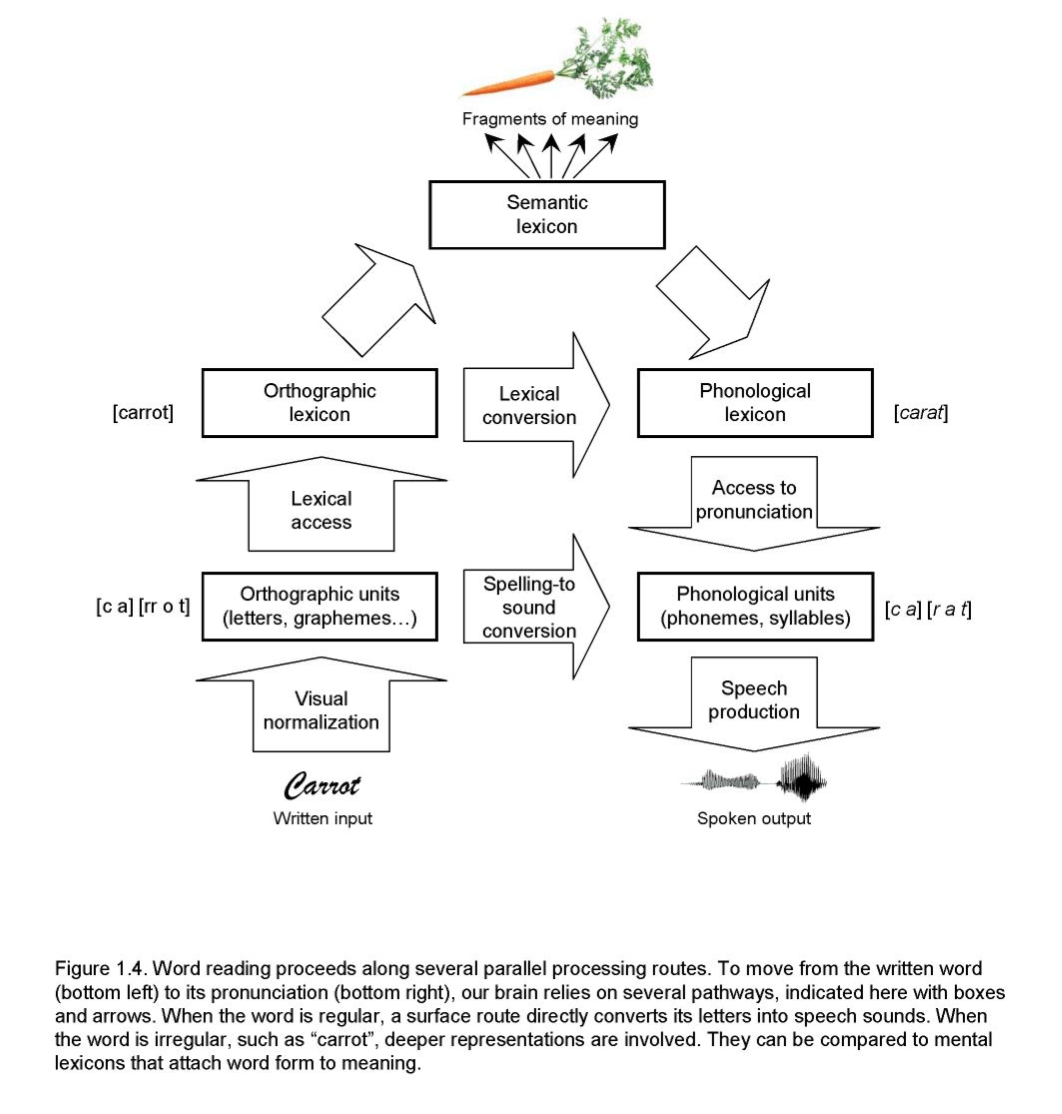
(Dehaene)
Reading is a complex neurological process—a highly-valuable cultural invention that must be deliberately and systematically taught to each generation. Educators must recognize that each student in their care has the right to learn to read despite the learning environment. At Landmark School, we painstakingly diagnose the root causes that impede access to reading, and we thoughtfully prescribe the right instruction to enable our students to reach their full reading potential.
Parents, guardians and educators should openly communicate about early screening for students. The best intervention is prevention through high-quality early literacy instruction. Many states, including Massachusetts, have adopted legislation mandating early literacy screening. Additionally, literacy instruction or intervention should be grounded in research-supported best practices. Ongoing assessment and progress monitoring should inform decisions about the best course of action to help the students reach their reading goals.
Works Cited
Seidenberg, M. (2018). Language at the speed of sight: How we read, why so many can't, and what can be done about it. Basic Books.
Gaab, N. (2019, January 28). A video interview with Nadine Gaab. Reading Rockets. Retrieved October 20, 2022, from https://www.readingrockets.org/teaching/experts/nadine-gaab
Gough, P.B., & Tunmer, W.E. (1986). Decoding, reading, and reading disability. Remedial and Special Education, 7(1), 6–10.
Moats, L. C., & Tolman, C. A. (2019). Letrs: Language essentials for teachers of reading and spelling. Sopris West Educational Services.
Scarborough, H. (2001). Scarborough’s Reading Rope © 2001 by Guilford Press
Scarborough Reading Rope. (n.d.). Braintrust. Retrieved October 27, 2022, from https://braintrusttutors.com/what-is-the-reading-rope/.
Moats, L. (2020, June 8). Teaching reading is rocket science, 2020: What expert teachers of reading should know and be able to do. Reading Rockets. Retrieved October 20, 2022, from https://www.readingrockets.org/research-by-topic/teaching-reading-rocket-science-2020-what-expert-teachers-reading-should-know-and
Deheane, S. (2009). Reading in the brain: The science and evolution of a cultural invention. Viking.
About the Author
Paul Howard has served as the Assistant Literacy Department Head at Landmark High School since 2015 and has taught one-to-one Literacy tutorials at Landmark since 2007. He graduated from Gordon College with a bachelor’s degree in English Language and Literature. Paul holds a master’s of science in Moderate Special Education from Simmons University and is a professionally licensed special education teacher.

Posted in the category Teaching.





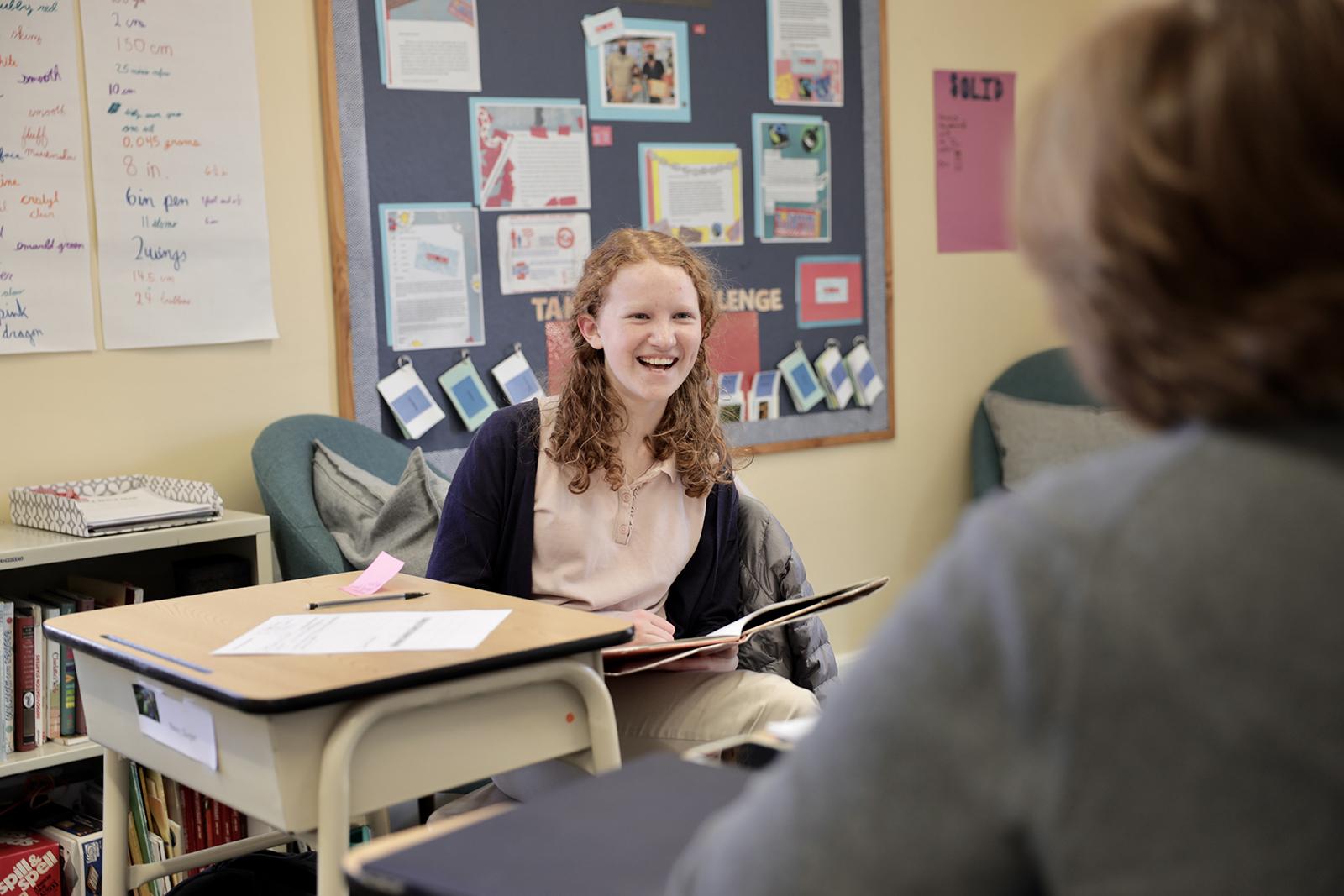


.jpg?v=1652115432307)





